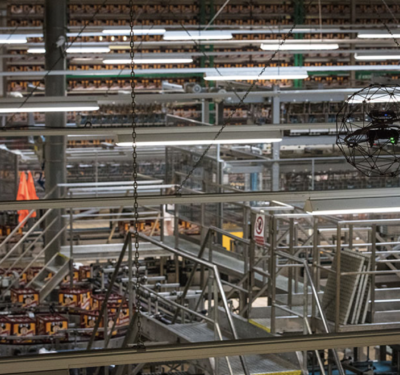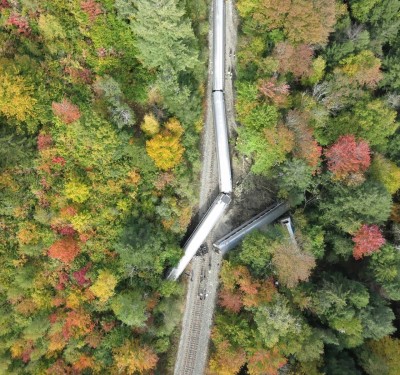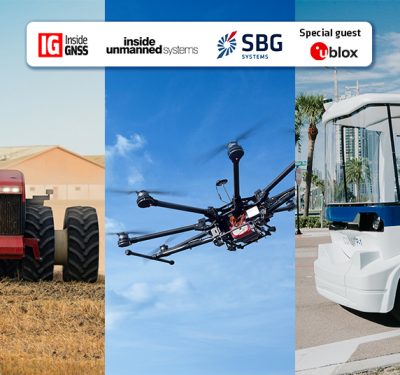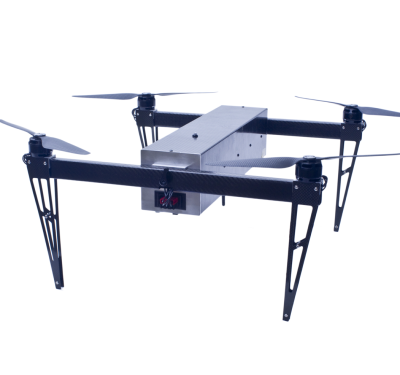Diverse items include EU-oriented products, ruggedization and firmware.

Echodyne announces major updates to its breakthrough MESA® radar. Photo courtesy of Echodyne.
A flurry of recent announcement from Kirkland, Washington-based Echodyne, a maker of electronically scanned array (ESA) radars and other related technologies, are being driven by the relaxing of COVID restrictions and an uptick in business globally, according to the company’s VP of Marketing, Leo McCloskey.
The global pandemic “was not the proper background” for updating the market about new developments but with the U.S. and other places slowly resuming normal activities, the blanket update seemed best, he said.
The new announcements primarily relate to the EchoGuard radar platform, which received its FCC license less than two years ago. “We have received numerous inquiries to extend [its] capabilities and adapt to local requirements, and this is the realization of many of those requests,” McCloskey explained. Thus, “EchoGuard International”—a new EchoGuard radar—incorporates RoHS3 construction and is compliant with CE Radio Equipment Directive (RED) for EU customers (per Type Examination Certificate per 2014/53/EU Radio Equipment directive). Additionally, many jurisdictions (such as the U.S. and Australia) allow for radio location use at 24.05-24.25 GHz, and EchoGuard spectrum expansion now includes variants to address these markets, McCloskey noted.
Updates and Advancements
Other announcements from the company include a firmware update and a new wave form. Because all Echodyne radars are software-defined, the firmware updates provide enhanced stability and greater ease of use and functionality. On the performance side, the newly introduced waveform is designed to detect and track very slow movement, such as a person walking slowly and stealthily.
Two other noteworthy developments round out the Echodyne news; a new, ruggedized radome designed to withstand 1.5 joules of impact energy without altering the radar’s form factor and a Lightweight Deployment Kit (LDK) kit that can store 10 hours of intelligence, surveillance and reconnaissance (ISR) in a backpack. “The idea of 10 hours of field ISR in a backpack weighing less than 20 pounds opens a world of opportunity for enhanced situational awareness,” McCloskey added.
McCloskey said the non-U.S. market announcement sprang from “at least three external requirements that must be met: export control, equipment emissions and spectrum allocation.” For European markets, export control is straightforward, he said. “The updates create a radar that now meets emissions requirements—CE, RoHS3, RED—and spectrum for radiolocation.” Regarding the new waveform, McCloskey said it demonstrates the company’s ability to extend the radar’s capabilities to meet customer demand. “The current waveform is ideal for detecting and tracking drones and, while it performs well for ground intruders, the new waveform is more sensitive to very slow-moving objects.” One obvious application is border security, but perhaps a more interesting one relates to safety around slow-moving landscapes for landslide detection and road safety, he added.
While not related directly to the product announcements, the company also said that it has been invited by the FAA to join the Unmanned Aircraft System (UAS) Beyond Visual Line of Sight (BVLOS) Aviation Rulemaking Committee (ARC). Echodyne, among other industry leaders, will contribute to defining the future of unmanned aircraft integration into the United States’ National Airspace System and regulation to ensure safety, security and compliance. The UAS BVLOS ARC has been given responsibility for providing recommendations to the FAA for regulatory requirements to normalize safe, scalable, economically viable and environmentally advantageous unmanned operations. It has been asked to use a performance-based, technology agnostic regulatory framework to address a wide variety of use cases.
“The formation of this committee represents a strong step forward for the broader UAS industry as we move towards a future of autonomous machines,” said Eben Frankenberg, CEO of Echodyne. “We have developed significant experience in the area of airspace situational awareness through our work with a range of commercial customers, government agencies, and UAS test centers [and] look forward to contributing our expertise and learnings to this important Aviation Rulemaking Committee.”






